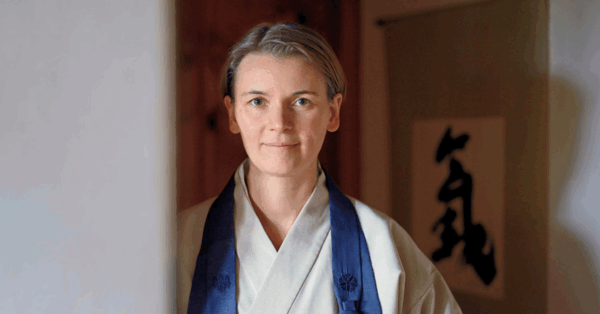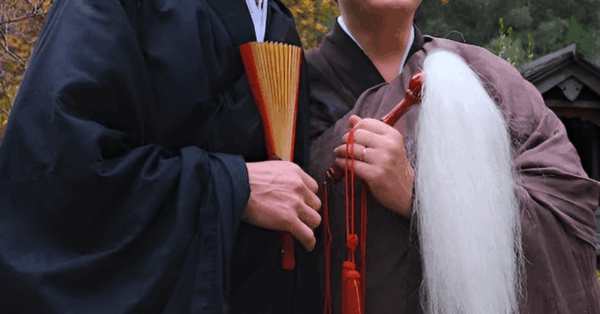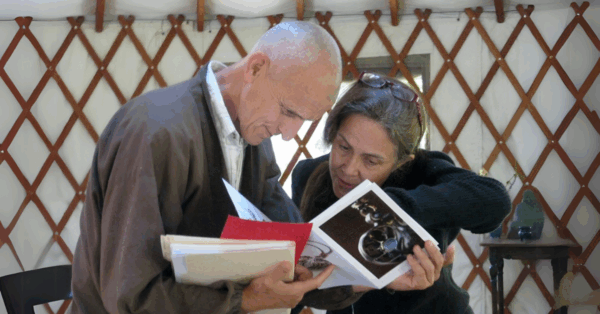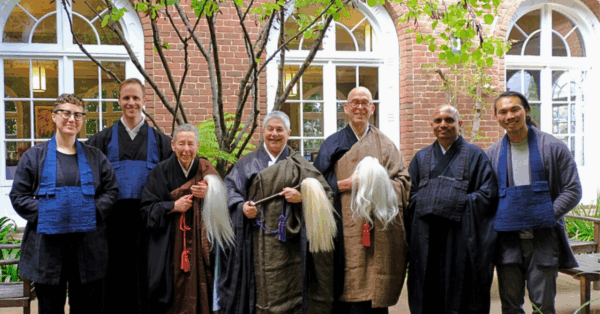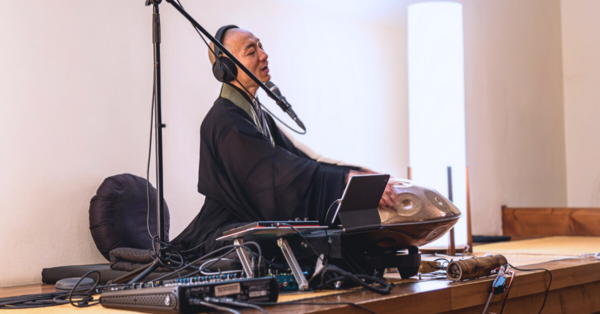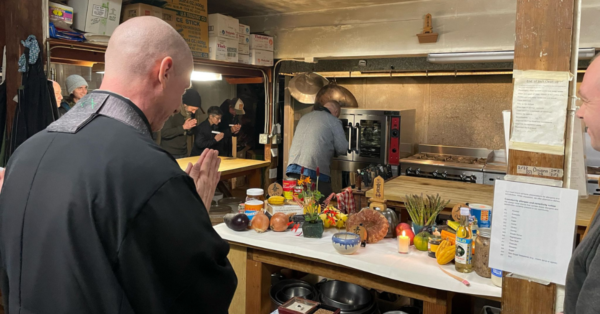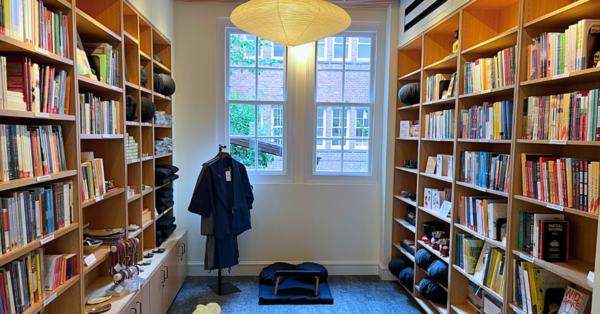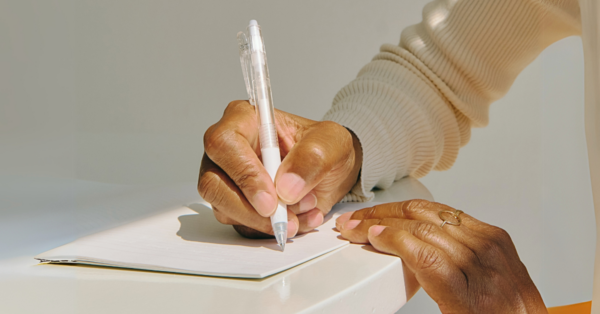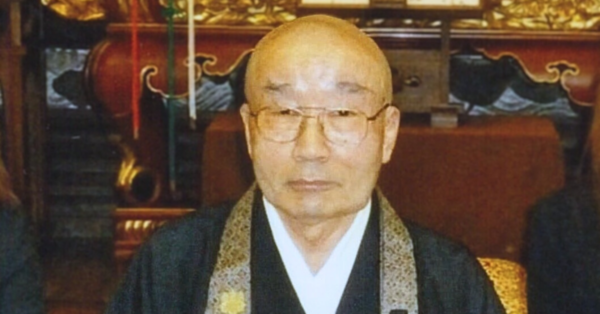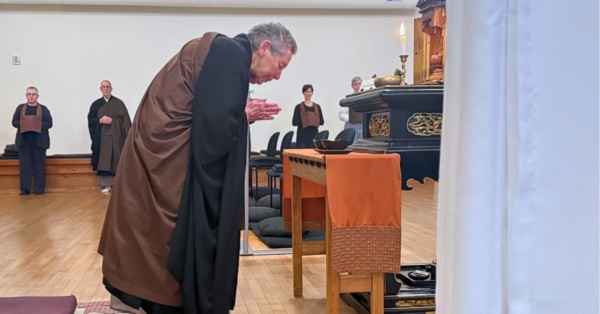Below the more empirical, medical layers of caregiving lies the realm of emotional and physical
suffering that the sick and dying can spend the hours of their days swimming through. In this more fluid realm of powerlessness, Contemplative Caregivers apply the medicine of awareness and being present with the patient or family member’s experience to relax and counteract suffering. In this article Brendan Crowe, a Contemplative Caregiver student, describes his experience training in the Pain Clinic at Laguna Honda Hospital in San Francisco.
Article by Brendan Crowe, Previous Contemplative Caregiver Course Administrator
(In this article the names of medical patients have been changed to protect their privacy.)
Goats seem to be the main outdoor attraction at Laguna Honda Hospital and Rehabilitation Center, watched over by a few of the hospital’s residents out for a smoke or some of the sunshine. I climb a long set of steps leading up the hill to see a large herd chomping on thicketed blackberry bushes that make up the low growth of the forest. But the thing I’m here for is a tour of Laguna Honda’s inside, and my tour guide is pain.
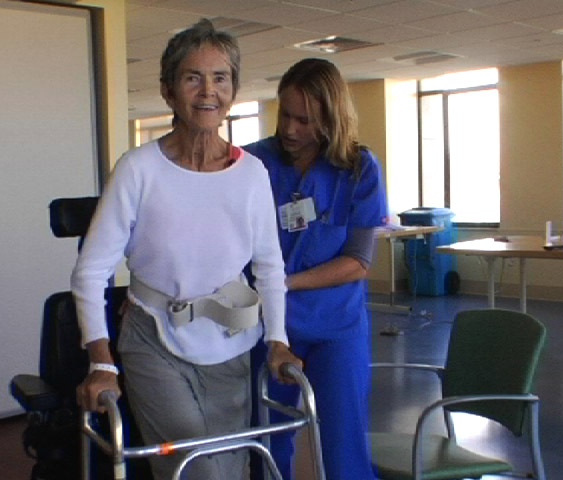
Dr. Grace Damman receiving therapy
(see States of Grace film)
Every Thursday Laguna Honda opens its pain clinic to hospital residents. Longtime Green Gulch Farm resident Dr. Grace Damman—a Buddhist practitioner and a medical practitioner—and her medical partner, Dr. Dan, provide pain relief techniques for any hospital residents who wish to go or who are referred by their doctors. The hospital has residents living on site because it was opened in 1867 as the Almshouse: “until the 20th century a common term for a place of refuge housing people who were chronically ill or impoverished with nowhere else to go.” (Our History | Laguna Honda)
I’m at the pain clinic with a small cohort: six participants of San Francisco Zen Center’s Contemplative Care Course, a year-long program designed to align Buddhist principles and practices with the work of caregiving. Some of our group members are new to meditation, having learned the Zen or Insight Meditation practice taught in our first term. Course member Elene Johnston coordinated this field trip so that we may observe the work of professionals who are using techniques that include sound therapy, massage, chanting, acupuncture and tai chi. But, we’re also here for a hands-on opportunity to offer the mindfulness and skillful presence that we are trained in through meditation practice.
With the readiness of veteran monks, we arrive promptly at 1 pm for meditation, but instead of sitting cross-legged on a cushion, we settle into chairs around a conference table, interspersed with the medical and therapeutic staff. We spend several minutes in silence, and it’s a unique experience for me in this setting, outside of my home or any zendo.
After the meditation ends there are brief introductions, and the staff turns towards the needs and conditions of the resident patients being served by the clinic today. Grace explains that the goal of the clinic is to manage pain without medication, but if medication is necessary, they use that too. Residents can come if they want, or if they’re referred. People are often referred when doctors don’t know what else to do.
We prepare to march into the day with Grace and her staff, joining ourselves up with the health practitioner of our choosing. I’m glad this does not involve literal marching, because I am nursing a long-term foot injury. I sit down to give my foot some respite as we are opening the doors to patients, introducing one another as some of them begin their intake. Three of us decide to shadow the music therapist and we are joined in a small medical room by Louis, a patient who is a large, well-built man on a gurney.
“I’m sorry,” Louis says, politely making an introduction. “I’m very confused because I’m going off of a steroid (prednisone), so the doctors told me that for a couple days I will be confused. I’m sorry if I don’t make any sense.” He is awfully polite. Louis explains that he is partially paralyzed from a stroke and has had no feeling in his left leg for a number of years. Louis’s therapy is intended to mitigate his pain caused by long-term immobilization, with the hope of restoring movement and feeling in his leg.
Music therapy begins, and the therapist alternates two handheld bells that look like bars taken from a xylophone. Each bell has a hammer attached and makes a soft tone with a flick of the wrist. She tones one bell, then the other, and guides Louis through a meditation in which he slowly scans his body and relaxes in the process. I notice that the meditation seems to be doing its work on me too, and there is now a deep calm to the room.
The music therapist moves tuning forks over Louis’s head and down the length of his body as the rest of us stand or sit in stillness. Dr. Dan arrives to check in with Louis (“Oh, I’m fine, thank you”) and place acupuncture needles along meridians that correspond to Louis’s pain, including points on his ears and at the top of his head. My friend Elene later expressed her curiosity about the MD’s approach to acupuncture. She is struck by Louis’s manners and maintains her distance as a clinical observer. But as Dr. Dan and the music therapist leave, an energetic massage therapist remains, and she invites our participation. Very slowly, my friend Piper massages Louis’s feet, and I put my hands on his head.
As Piper starts to massage Louis’s feet, Elene thinks to herself, “I don’t know what to do” and notices her own urge to do something. At the same time, she sees me just holding my hands on Louis’s head, but not massaging his head, just being there. She tells me later, “You were cradling his head and it was very powerful because you weren’t moving your hands. My take away was that our hands didn’t have to be doing anything. It’s almost like trying to look someone in the eye, and it’s as hard as that to hold somebody without moving your hands.” For me, it comes directly out of what I learn through meditation. Willing to not be in a hurry. Open, unmoving. Sitting or standing right there. Offering and receiving.
Elene realizes she doesn’t have to do anything and becomes aware that she is no longer observing Louis clinically: she sees him as a human being. As Piper moves her hands to one of Louis’s arms, Elene takes hold of Louis’s leg and feels as if it could be any one of us on the table, with Louis instead standing beside us. And it isn’t just us as individuals, but us as a unit. Our focus isn’t just restricted to what is happening to one person, but wider. We all administer to each other.
Louis becomes vocal and appreciative and articulates how he is feeling. “I haven’t had feeling in my foot for many years,” he says, “and I felt something tingle in it.” This breaks the ice, and a few of us begin a conversation about football, about which Louis is very enthusiastic and animated. A good sign.
To end the session, we offer some chanting together in tones. Louis has tears in his eyes. As Louis leaves to have a procedure on those eyes, Elene bestows her blessing: “I hope it goes well,” she thinks to herself. She marks his transition from this therapeutic space to the next one. I feel integrated with the support-network here. The presence offered in this room will extend beyond the Pain Clinic as we give and receive the benefits of mindful caregiving.
__________
To learn more about the yearlong Contemplative Caregiver Courses, please visit our website.



